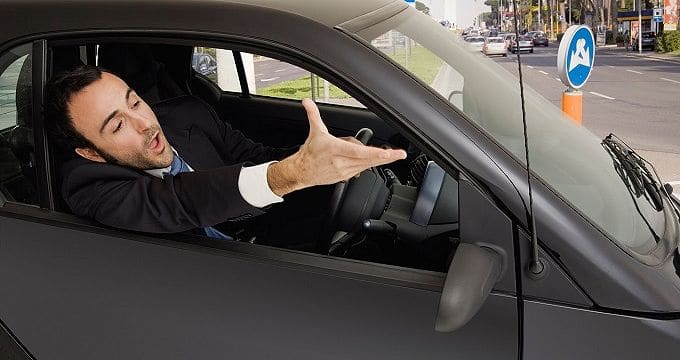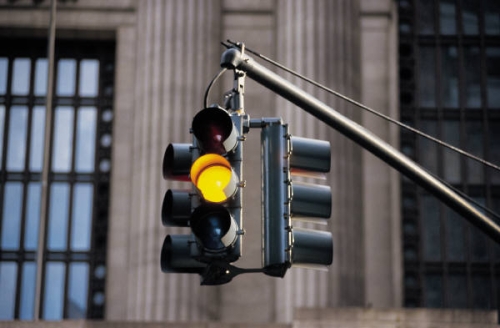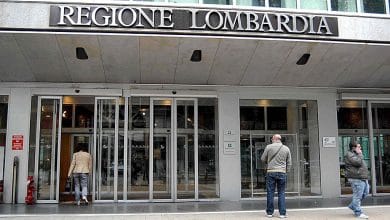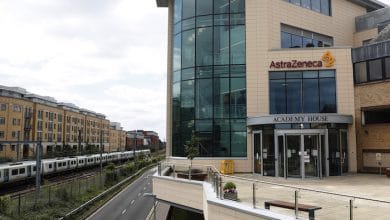
The category that spends the most time in the car is that of medical representatives. The survey was conducted by Lease Plan Mobility Monitor and from TNS
Of Alberto Lattuada 12 January 2015 – Engines online
Another important figure is that relating to the minutes spent in traffic. Rental car drivers 60% spend an average of 50 per day
The "gouging” in the car is in first place among the most hated behaviors while driving. The global survey, carried out, says so by the LeasePlan Mobility Monitor observatory and the international research institute TNS, conduct on long-term rental car drivers in 20 countries. The second step of the podium is driving too slowly and the third is "cutting off" other cars.
The "gouging” wins the particular ranking with the 24%, breaking away from driving too slowly, with the 20%, and "cutting off" other cars, with the 17%. In addition to the leading trio, the so-called "wooden medal" stands out, the fourth classified, the verbal attacks that are suffered while driving. The surprise lies in the fact that the Italians claim not to commit them. According to the survey by LeasePlan Mobility Monitor and TNS, driver behavior varies depending on whether you drive a rental car or your own car. 8% of those questioned said that they drive a company car more carefully and 2% stated that they are not careful when driving even with their own car. The worst drivers turned out to be the Romanians, followed by the Italians, who made a sort of "mea culpa". Close behind are Greek, Bulgarian, Croatian and German drivers.
Another important data is that relating to the minutes spent in traffic. Rental car drivers 60% spend an average of 50 per day. In Italy it emerged that the average daily time to go to the office is 60 minutes, the category that spends the most time in the car is that of medical and scientific representatives. “Influencing driver behavior is the next step that will lead to an improvement in company fleet management,” said Gavin Eagle, commercial director of LeasePlan in Italy. “We need to engage drivers to change their habits and meet safety goals“. The Clear Box project was born with this strategic value and will be adopted in all the countries in which LeasePlan operates. This is a project which provides for the possibility of installing, on rented vehicles, a telematic device for the management of those aspects linked both to the prevention of risks and to the operational control of the fleet. The choice depends on the specific needs of the customers which vary according to the product sector to which they belong and the number of vehicles rented. "LeasePlan's strategic objective is to make telematics an integral part of our commercial proposition, so as to be able to increase the efficiency of our services in the medium term for the entire fleet in circulation"concluded Gavin Eagle.
12th January, 2015
The Cassation changes the rules… of the yellow light
 Vincenzo Borgomeo talks about it in Repubblica: the Cassation changes the rules on the yellow light and decreases the time for the passage before risking a fine. And so you risk many more fines:
Vincenzo Borgomeo talks about it in Repubblica: the Cassation changes the rules on the yellow light and decreases the time for the passage before risking a fine. And so you risk many more fines:
The yellow light time now - due to a historic ruling by the Cassation - could go from 4 to 3 seconds in half of Italy. An enormous difference if we think, for example, that the mayor of Chicago, by adjusting the yellow time from 3 to 2.9 seconds, earned 8 million dollars more in a year and that Italy has only recently automated traffic light controls. On our roads from 2009 to today the number of fines has thus grown by 987 per cent, while in the same period in Germany the increase was 11 and in France by 30%... We are therefore "under pressure", but the Cassation has however decided that 3 seconds is more than enough to stop.
However, passing through a red light in Italy entails a minimum fine of 162 euros and the loss of six points from the licence. And the municipalities they collect three billion euros a year from fines to motorists:
"And obviously he's right - explains the engineer Luigi Lucchini, CEO of Sca e, a leading company in Europe in the construction of traffic lights - but this would be true in a 'normal' country where the limits are respected and there are precise laws on the subject". Not with us, however: we are in total anarchy and it is no coincidence that the Cassation itself, in order to arrive at this sentence, and therefore try to bring some order, had to refer to a study by the Cnr. Nor should we forget the fact that in Italy since 2010 there is a law which obliges the Municipalities to allocate the proceeds of the fines for road safety initiatives which, however, is inapplicable due to the lack of implementing decrees. Thus the proceeds of the fines are budgeted and often used to raise cash: the risk therefore that this possibility of shortening the time for yellowing turns into a trap, without any benefit for road safety, is real. In fact, with us, half of the traffic lights are set to 3 seconds and the other to 4, with almost non-existent percentages of those (we are in the order of 1 percent) reaching 5. But that's not all because then how explains the engineer . Lucchini, «we have cities like Milan and Florence where the traffic lights are calibrated on yellow for 3 seconds, others (like Rome) standardized on 4 seconds».
Tuesday 13 January 2015 – next newspaper
Related news: Important news on yellow traffic light times: no more fines for fast yellow. Undersecretary Enrico Zanetti: it is common pre-normative practice that i minimum times are of 4 seconds on urban roads, 5 seconds on country roads. As seen, these are minimum times, it means that it is in the discretion of the municipalities to increase these times, but they absolutely cannot decrease them. (April 3, 2014 – Chronicle)
Below is the full text of the ruling.
Court of Cassation, section VI Civil - 2, sentence 20 May - 1 September 2014, 18470 President Petitti – Speaker Manna
Conduct of the process
With judgment no. 473 of 16.8.2012 the Court of Lecco, acting as judge of appeal and in reform of the first instance sentence issued by the justice of the peace of the same center, upheld the opposition proposed by KD against the assessment report of the municipal police of municipality of Montevecchia, in relation to the infringement of articles 41, paragraph 11 and 146, paragraph 3 of the highway code, for having continued the march of the vehicle despite the traffic light projecting the red light. In support of the decision, the fact that, although for a few hundredths of a second, the yellow light of the traffic light (as resulted from the frames produced) had lasted less than four seconds, a duration generally considered to be adopted on urban roads based on the note of the Ministry of Transport n. 67906 of 16.7.2007.
For the cassation of this sentence, the municipality of Montevecchia proposes an appeal, entrusted to eight reasons, then illustrated by memorandum.
Resists with counterclaim KD
Reasons for the decision
1. – The first ground of appeal denounces the violation and false application of art. 342 cpc, in relation to art. 360, no. 3 cpc, because the appeal would have been based only on the mere diversity of the first instance sentence with respect to what was decided in similar precedents.
2.- The second reason infers the violation and false application of the arts. 41, paragraph 11, and 146, paragraph 3 of the CdS, in relation to n. 3 of the art. 360 cpc, since, having the appellant herself admitted to having crossed the stop line when the red light of the traffic light was triggered by 190 thousandths of a second, the duration of the projection of the yellow light of the traffic light is irrelevant.
3. – The third submission exposes the violation and false application of art. 113 cpc, for having the Court based the decision not on a legal provision but on a ministerial note, i.e. no. 67906 of 16.7.2007, which does not constitute, as admitted by the judge of second instance, a source of law.
4. – The fourth plea complains of the omitted, insufficient and contradictory motivation regarding a controversial and decisive fact for the judgment, in relation to n. 5 of the art. 360 cpc While applying the aforesaid ministerial resolution, the judge of second instance did not consider that in this case a duration of the yellow light of three seconds is considered as minimum, which is precisely the duration calculated for the maximum speed of 50 kmh.
5. – The fifth reason also attaches the omitted, insufficient and contradictory reasoning regarding a controversial and decisive fact for the judgment, in relation to n. 5 of the art. 360 cpc, but under another aspect. In fact, it is argued that from the frames produced it would be inferred that from the moment the yellow light came on to the moment in which the car crossed the stop line, 4 seconds and 206 thousandths would have elapsed, which vitiates the adequacy of the judgment actually operated by the trial judge.
6. – The sixth submission, which is also classified pursuant to no. 5 of the art. 360 cpc and having regard to the same matter of fact.
7. – The seventh plea denounces the violation of art. 141, paragraph 3 of the Road Traffic Code, which requires speed to be regulated near intersections, a rule that the second instance judge did not take into consideration.
8. – Finally, with the eighth reason, the violation and false application of art. 91 cpc, in relation to n. 3 of the art. 360 cpc, because the court costs were liquidated in excess of the value of the case, equal to € 138.00.
9. – The first reason is inadmissible due to lack of self-sufficiency.
The principle of self-sufficiency of the cassation appeal - which finds its raison d'être in the need to allow the judge of legitimacy to assess the validity of the plea without having to proceed with the examination of the official or party files - also applies in relation to reasons for appeal
with respect to which errors are reported by the trial judge; it follows that, if the appellant denounces the violation and false application of art. 342 code proc. civ. consequent to the failure to declare the nullity of the appeal deed due to vagueness of the reasons, must include in the appeal, in their specific structure, the aforementioned reasons formulated by the counterparty (Cass. nos. 86/12 and 9734/04).
In the present case, the plea does not transcribe the content of the appeal, but merely summarizes its meaning and limits, assuming that it would have limited itself to verifying the existence of different decisions on the same matter by the justices of the peace.
10. – The second reason is well founded.
This Court has already had the opportunity to observe (judgment n. 14519112, not extended), in relation to the permanence times of the yellow traffic lights, that the motorist must adapt the speed to the state of the places and that a duration of four seconds exposure to yellow light does not constitute a mandatory datum. In fact, the resolution of Ministry of Transport no. 67906 of 16.7.2007, in ascertaining that the highway code does not indicate a minimum duration for the activation period of the yellow activation lantern, adjusts the minimum duration time of this light which can never be less than three seconds.
In this direction, the Court deems it necessary to give continuity, in consideration of the fact that three seconds constitute, on the basis of the pre-normative study of the CNR published on 10.9.2001, referred to in the aforementioned ministerial resolution, the stopping time of a vehicle proceeding at a speed not exceeding 50km/h. With the consequence that a longer duration must certainly be considered congruous.
11. – The acceptance of the second plea determines the absorption of the remaining complaints, all variously articulated on the same subject, or (as regards the eighth submission) on the costs of the proceedings.
12. - Consequently, the contested sentence must be quashed with referral to the Court of Lecco, in the person of a different judge, who in deciding the merits will comply with the aforementioned principle of law, also providing for the costs of the present cassation proceedings.
PQM extension
The Court accepts the second ground of appeal, rejecting the first and absorbing all the others, cancels the contested sentence with referral to the Court of Lecco, in the person of a different judge, who will also decide on the costs of cassation.





